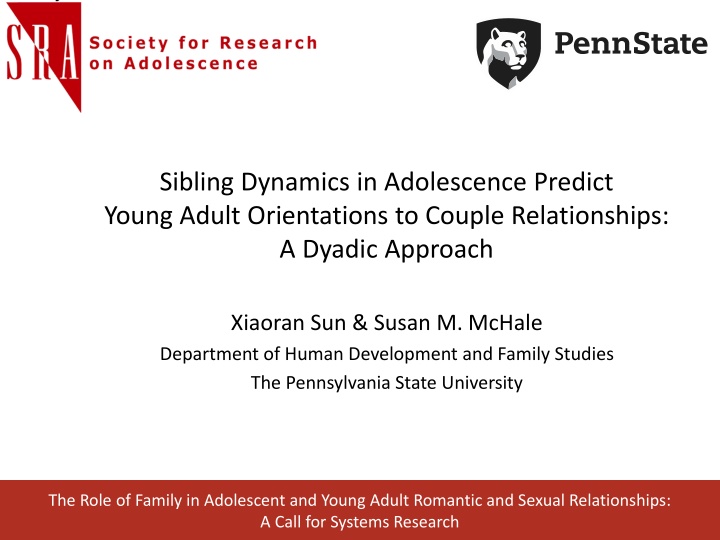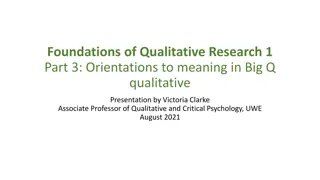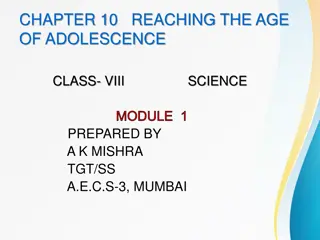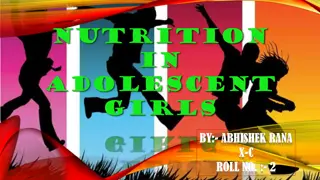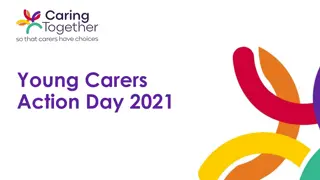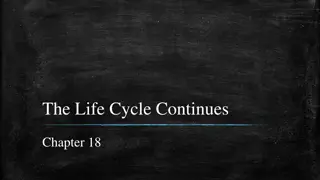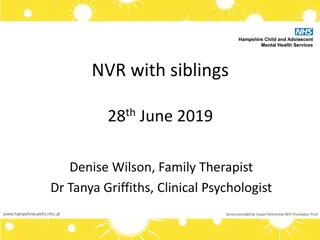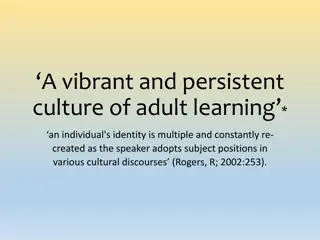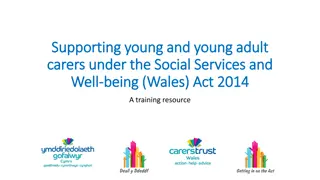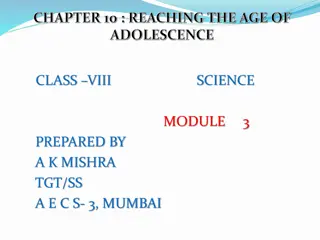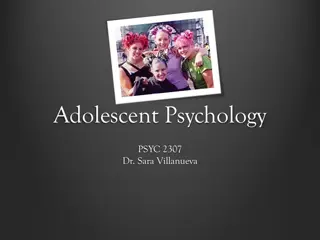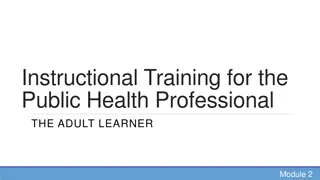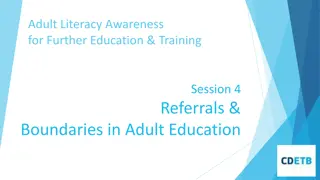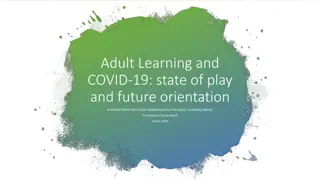Sibling Dynamics in Adolescence Predict Young Adult Orientations to Couple Relationships: A Dyadic Approach
This study by Xiaoran Sun and Susan M. McHale from The Pennsylvania State University explores the role of family dynamics in shaping adolescent and young adult romantic and sexual relationships. The research calls for a systems approach to understanding the influence of sibling relationships on attitudes towards couple interactions in young adulthood.
Download Presentation

Please find below an Image/Link to download the presentation.
The content on the website is provided AS IS for your information and personal use only. It may not be sold, licensed, or shared on other websites without obtaining consent from the author.If you encounter any issues during the download, it is possible that the publisher has removed the file from their server.
You are allowed to download the files provided on this website for personal or commercial use, subject to the condition that they are used lawfully. All files are the property of their respective owners.
The content on the website is provided AS IS for your information and personal use only. It may not be sold, licensed, or shared on other websites without obtaining consent from the author.
E N D
Presentation Transcript
Sibling Dynamics in Adolescence Predict Young Adult Orientations to Couple Relationships: A Dyadic Approach Xiaoran Sun & Susan M. McHale Department of Human Development and Family Studies The Pennsylvania State University The Role of Family in Adolescent and Young Adult Romantic and Sexual Relationships: A Call for Systems Research
Background Family influences on adolescents and young adults couple relationships Most research has focused on influences of parent-youth relationships and inter-parental relationships We know little about whether and how sibling relationships, another key family relationship, have implications for young adults couple relationships Cunningham & Thornton, 2006; Lopez, Melendez, & Rice, 2000; Reese-Weber & Kahn, 2005
Background Sibling relationships and couple relationships Similar role structure Companions and equal partners But continually negotiate the power structure Theoretical basis: Social learning theory Attachment perspective Sibling relationships may serve as a training ground for later couple relationships Dunn, 1983; McHale, Updegraff, & Whiteman, 2012
This study Sibling relationships across adolescence Warmth Conflict Orientations to couple relationships in young adulthood Attitudes toward marriage Attachment orientations: avoidance and anxiety Holman, Larson, & Harmer, 1994; Mikulincer & Shaver, 2012; Raley, Crissey, & Muller, 2007
This study Sibling relationships as a dyadic phenomenon Siblings are mutually influential and both contribute to their relationship s characteristics Siblings may have different experiences in their shared relationship Display different behaviors Experience different emotions Hold different attitudes Dunn, 1983; Plomin, Asbury, & Dunn, 2001
This study: A dyadic approach Sibling relationship: a dyadic relationship Siblings are mutually influential and both contribute to their relationship s characteristics Siblings may have different experiences in their shared relationship Display different behaviors Experience different emotions Hold different attitudes Actor-Partner Interdependence Model (APIM) Dunn, 1983; Plomin, Asbury, & Dunn, 2001; Kenny, Kashy, & Cook, 2006
Actor-Partner Interdependence Model Actor effect: Sib 1 Sib 1 orientations experiences Kenny, Kashy, & Cook, 2006
Actor-Partner Interdependence Model Partner effect: Sib 1 Sib 1 orientations experiences Sib 2 experiences Kenny, Kashy, & Cook, 2006
Actor-Partner Interdependence Model Actor-Partner Interactive effect: Sib 1 Sib 1 orientations experiences Sib 2 experiences Kenny, Kashy, & Cook, 2006; Sun, McHale, Crouter, & Jones, 2017
We examined: Actor effects Partner effects Actor-partner interaction effects Moderation by youth sex and sibling sex constellation Girls/sisters may be more susceptible to effects of sibling relationships Effects may be stronger for mixed-sex dyads (among heterosexual youth)
Participants N = 152 families from the Penn State Family Relationships Project Firstborns & Secondborns 38 sister-sister, 34 brother-brother, 44 sister-brother, 36 brother- sister 4 time points Time 1 to 3: annual home interviews Firstborns: M = 16.42 (SD = .79) years old at Time 1 Secondborns: M = 13.83 (SD = 1.14) years old at Time 1 Time 4: young adult follow-ups (10 years after Time 1); phone interviews Firstborns: M = 26.26 Secondborns: M = 23.65 18% were married
Measures Experiences with sibling relationships (Averaged across Times 1 to 3): Warmth (8-item, 5-point; How much do you share your inner feelings or secrets with your [brother/sister]? ) Conflict (5-item, 5-point; How often do you tease, annoy, or irritate your [brother/sister]? ; How often do you try to hurt your [brother/sister] by pushing, punching or hitting [him/her]? ) Blyth & Foster-Clark, 1987; Stocker & McHale, 1992
Measures Orientations to couple relationships (Time 4) Attitudes toward marriage (14-item, 5-point; A person isn t really grown up until he/she gets married. ) Attachment avoidance and anxiety (18-item, 5-point; I prefer not to show a partner how I feel deep down. ; I worry about being abandoned. ) Control variables Parents marital love (Time 1 to 3; reported by mother and father) Young adults age (Time 4) Parents age (Time 1) Kinnaird & Gerrard, 1986; Wallin, 1954; Brennan, Clark, & Shaver, 1998
Analytic Plan Multilevel Modeling for APIM Two-level models Level 1: Two siblings from each family Level 2: Family Estimating the effects Main effects: actor; partner Moderation by sex and sex constellation Actor-partner interaction Actor-partner interaction moderated by sex or sex constellation Nonsignificant interaction effects eliminated from final models Kenny et al., 2005; Laurenceau & Bolger, 2005; Sun et al., 2017
Results: Predicting Attitudes Toward Marriage Sibling warmth as predictor N.S. main actor or partner effects N.S. two-way interactions (i.e., actor/partner moderated by sex or sex constellation, actor-partner interaction) Actor-Partner-Sex Constellation interaction: = .38, SE = .16, p <.05
4.1 Same-sex dyads 3.8 Mixed-sex dyads 4 Young Adult Attitudes Toward 3.75 3.7 3.9 3.65 3.8 3.6 Marriage 3.7 3.55 3.5 3.6 3.45 3.5 Partners' sibling warmth Partners' sibling warmth 3.4 High Low High Low 3.35 3.4 3.3 3.3 3.25 Low High Low Actor's sibling warmth High Actor's sibling warmth Actor X Partner X Sex Constellation interaction Among mixed-sex dyads: The positive link between youth s warmth to sibling and their attitudes toward marriage was amplified by their siblings high warmth to them - an amplification effect. Among same-sex dyads: The positive link between youth s warmth to sibling and their attitudes toward marriage was more evident when their siblings experienced low warmth a possible social comparison effect.
Results: Predicting Attitudes Toward Marriage Sibling warmth as predictor N.S. main actor or partner effects N.S. two-way interactions (i.e., actor/partner moderated by sex or sex constellation, actor-partner interaction) Actor-Partner-Sex Constellation interaction: = .38, SE = .16, p <.05 Sibling conflict as predictor All N.S.
Results: Predicting Attachment Avoidance Sibling warmth as predictor Main actor effect: = -.19, SE = .08, p <.05 Main partner effect and interactions: All N.S. Sibling conflict as predictor Main actor effect: = .23, SE = .08, p <.01 Main partner effect and interactions: All N.S.
Results: Predicting Attachment Anxiety Sibling warmth as predictor N.S. main actor or partner effects N.S. two-way interactions (i.e., actor/partner moderated by sex or sex constellation, actor-partner interaction) Actor-Partner-Sex Constellation interaction: = -.36, SE = .18, p <.05
Same-sex dyads Mixed-sex dyads 2.9 Young Adult Attachment Anxiety 2.9 2.7 2.7 2.5 2.5 2.3 2.3 2.1 2.1 Partners' sibling warmth 1.9 Partners' sibling warmth 1.9 High Low 1.7 High Low 1.7 1.5 1.5 Low Actor's sibling warmth High Low Actor's sibling warmth High Actor X Partner X Sex Constellation interaction Among mixed-sex dyads: The negative link between youth s warmth to sibling and attachment anxiety was amplified by their siblings high warmth to them - an amplification effect. Among same-sex dyads: N.S. for both high and low sibling warmth
Results: Predicting Attachment Anxiety Sibling conflict as predictor N.S. main actor or partner effects Actor-Sex interaction: = -.59, SE = .16, p <.01 Young women: = .50, SE = .11, p <.001 Young men: = -.09, SE = .12, p = .43, N.S. All other two-way and three-way interactions: N.S. Consistent with the expectation that girls/young women would be more susceptible to influences by sibling relationships
Contributions Illuminate how sibling relationships in adolescence predicted orientations to couple relationships in young adulthood Direct actor effects, consistent with social learning and attachment perspectives Qualified by the sibling s experiences (partner effect) and/or youth sex and sibling sex constellation Systems approach for dyadic data analysis Family subsystem of siblings Effects and interactions involving both siblings experiences Accounting for and examining interdependencies The role of other family subsystems Control for parents marital relationship quality
Thanks! Questions & Suggestions xiaoran.sun@psu.edu Acknowledgement to: Eunice Kennedy Shriver National Institute of Child Health and Human Development (R01-HD32336; co-PIs: Susan McHale, Ann Crouter, Kimberly Updegraff, Adriana Umana-Taylor) The National Science Foundation (IGERT Grant DGE-1144860, Big Data Social Science; PI: Burt Monroe) The Role of Family in Adolescent and Young Adult Romantic and Sexual Relationships: A Call for Systems Research
